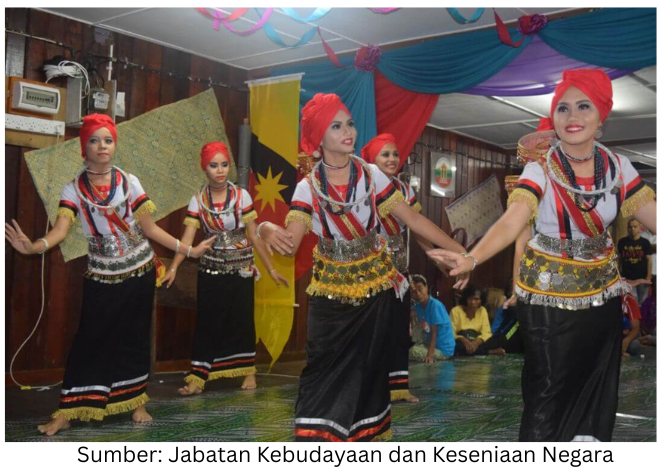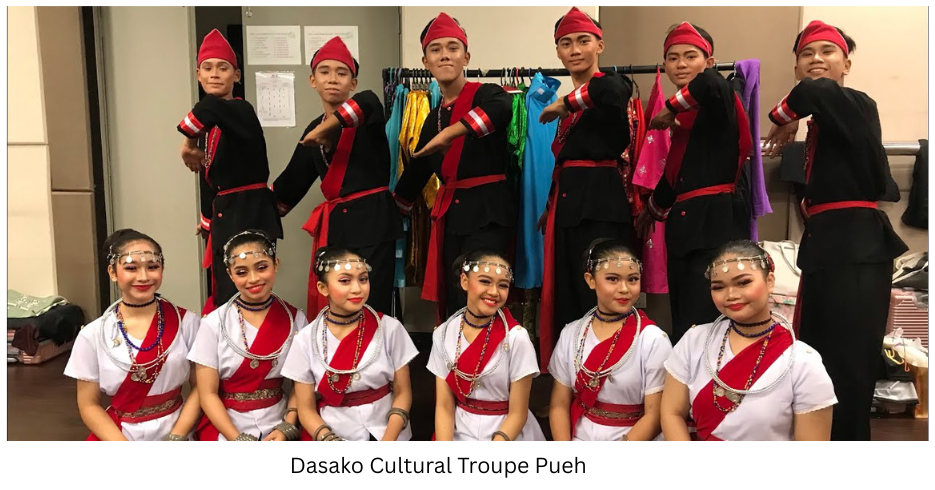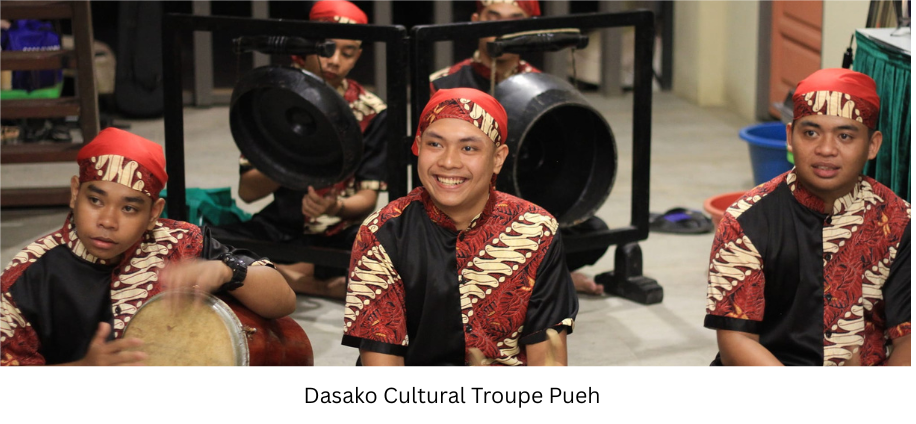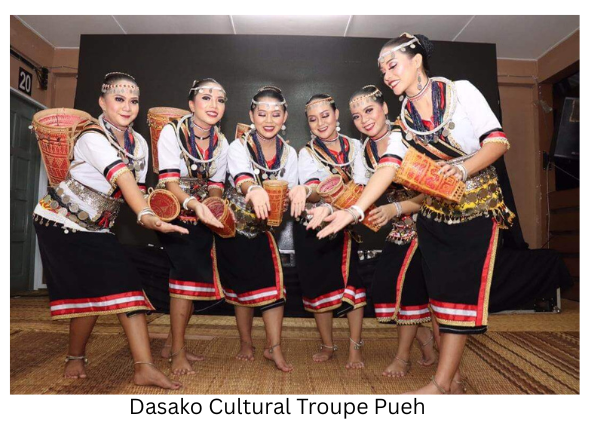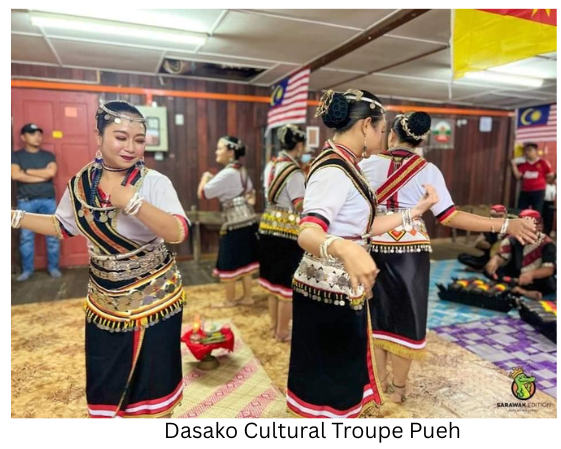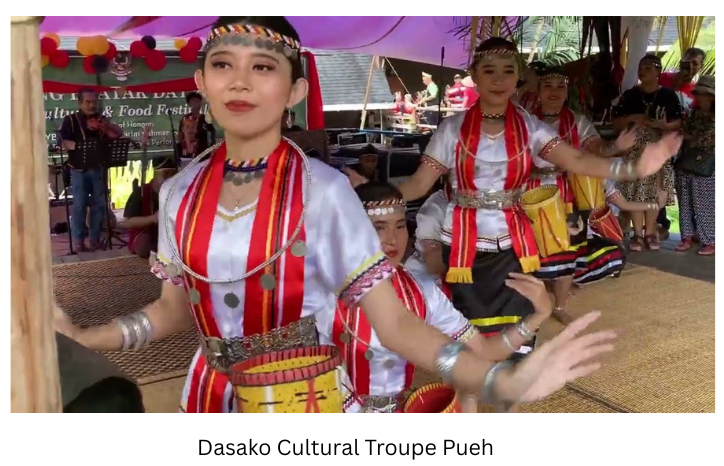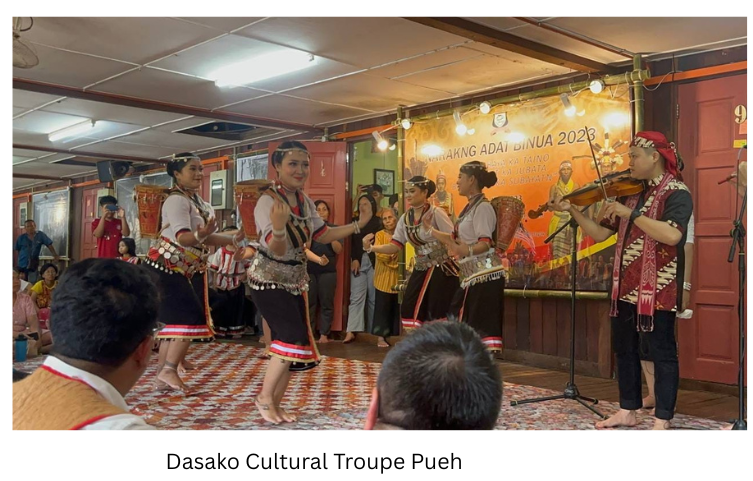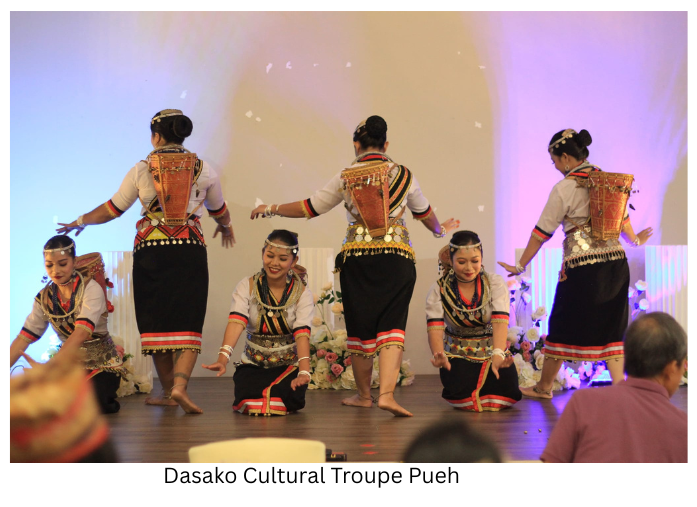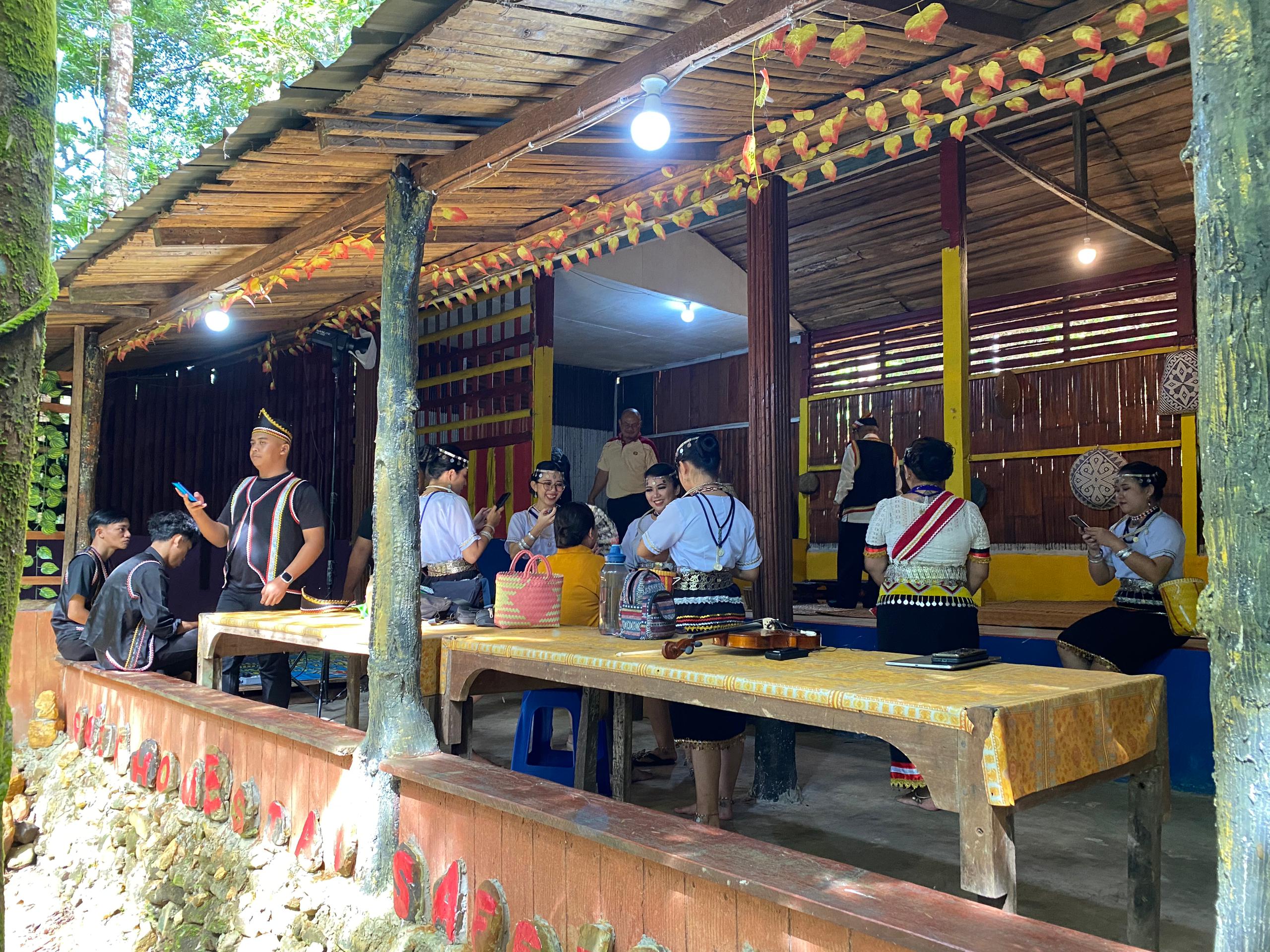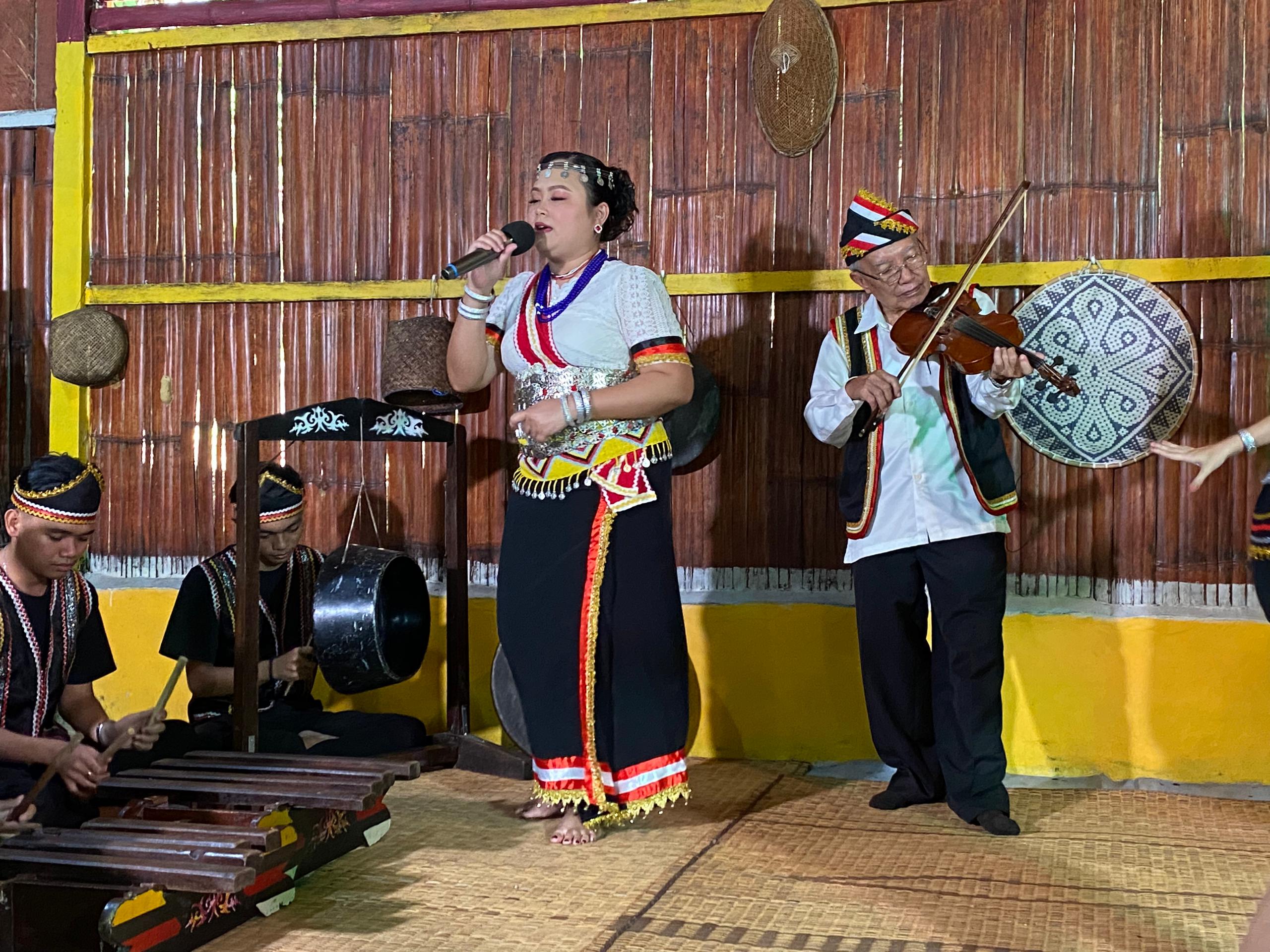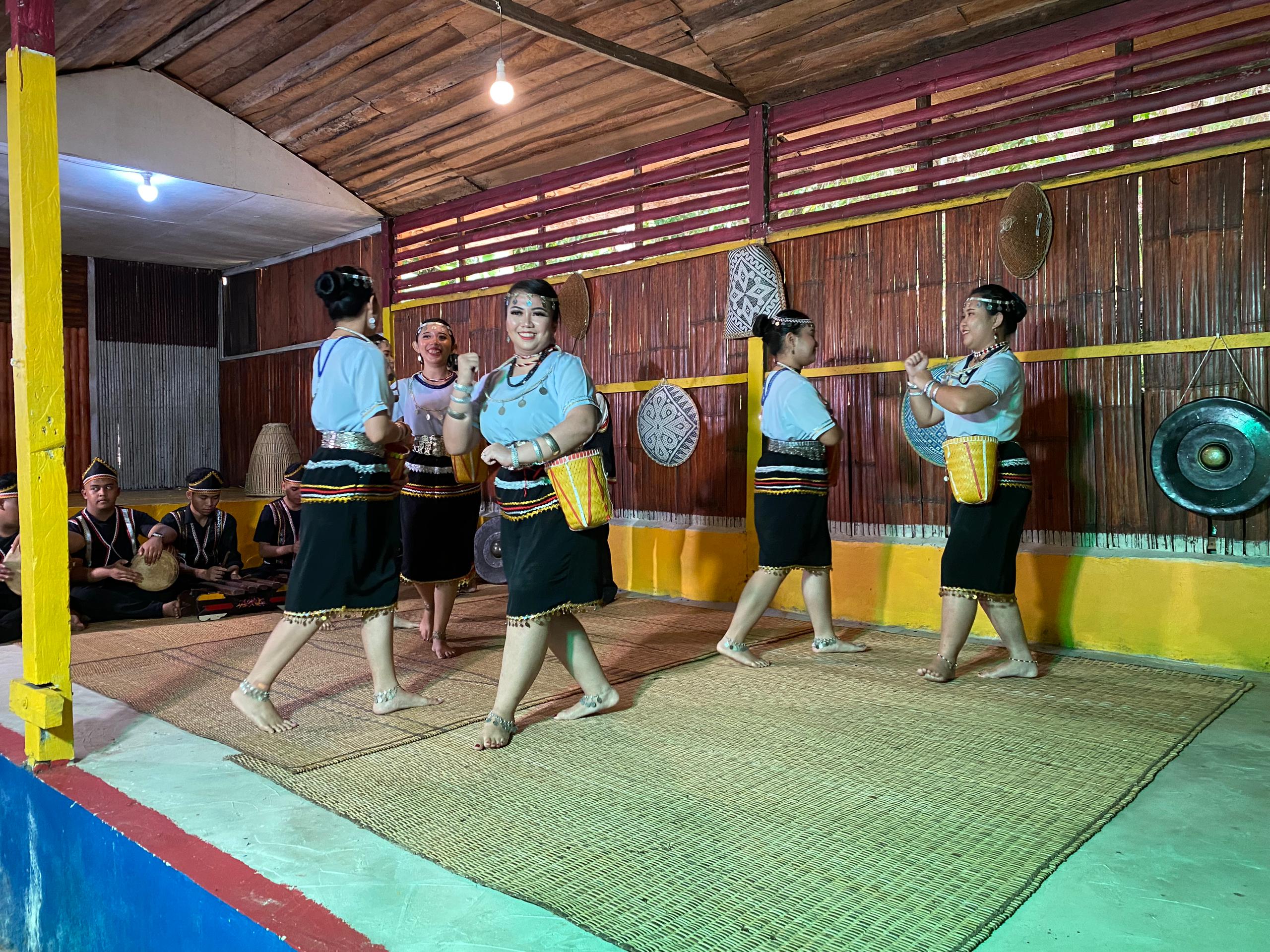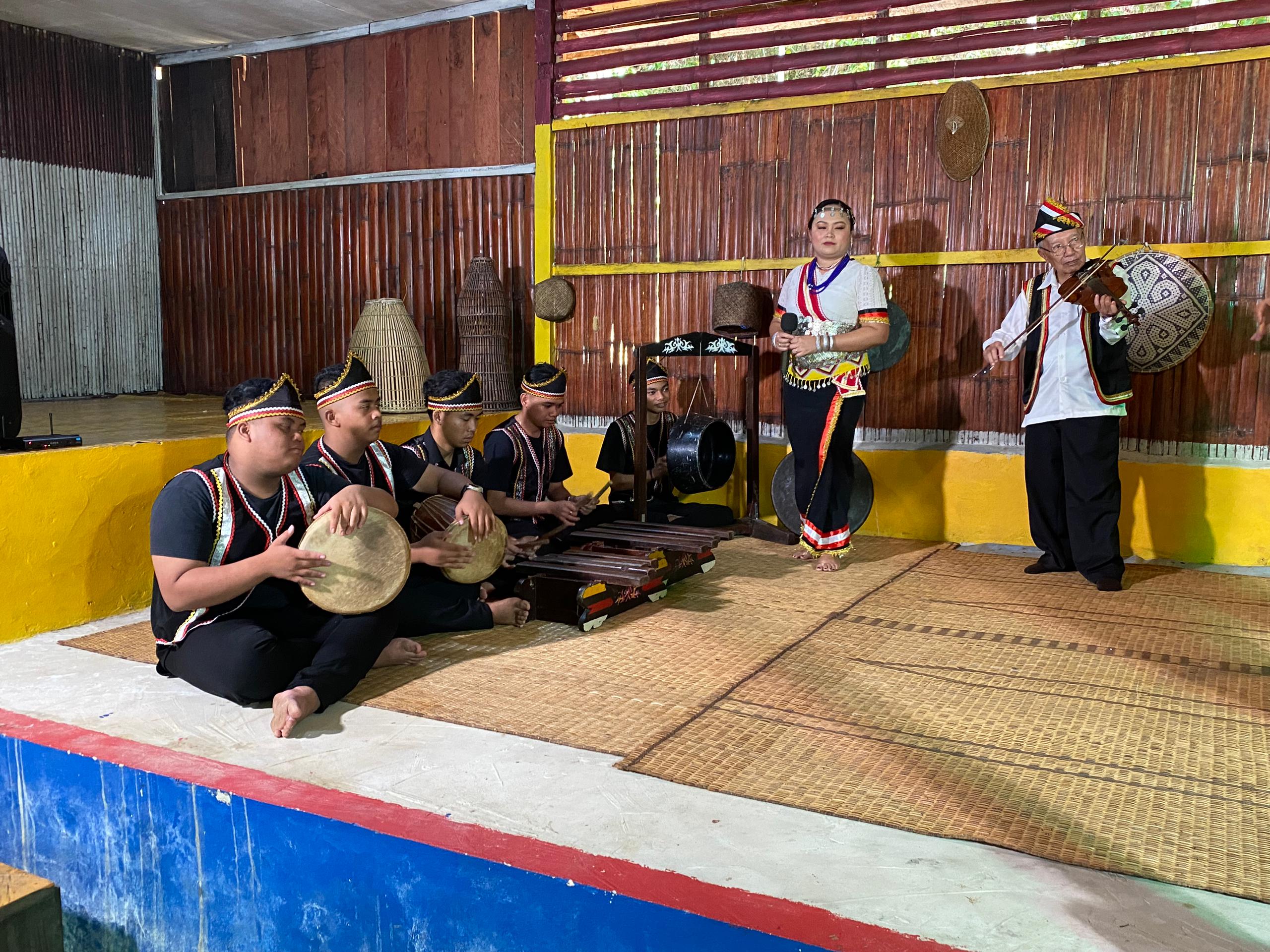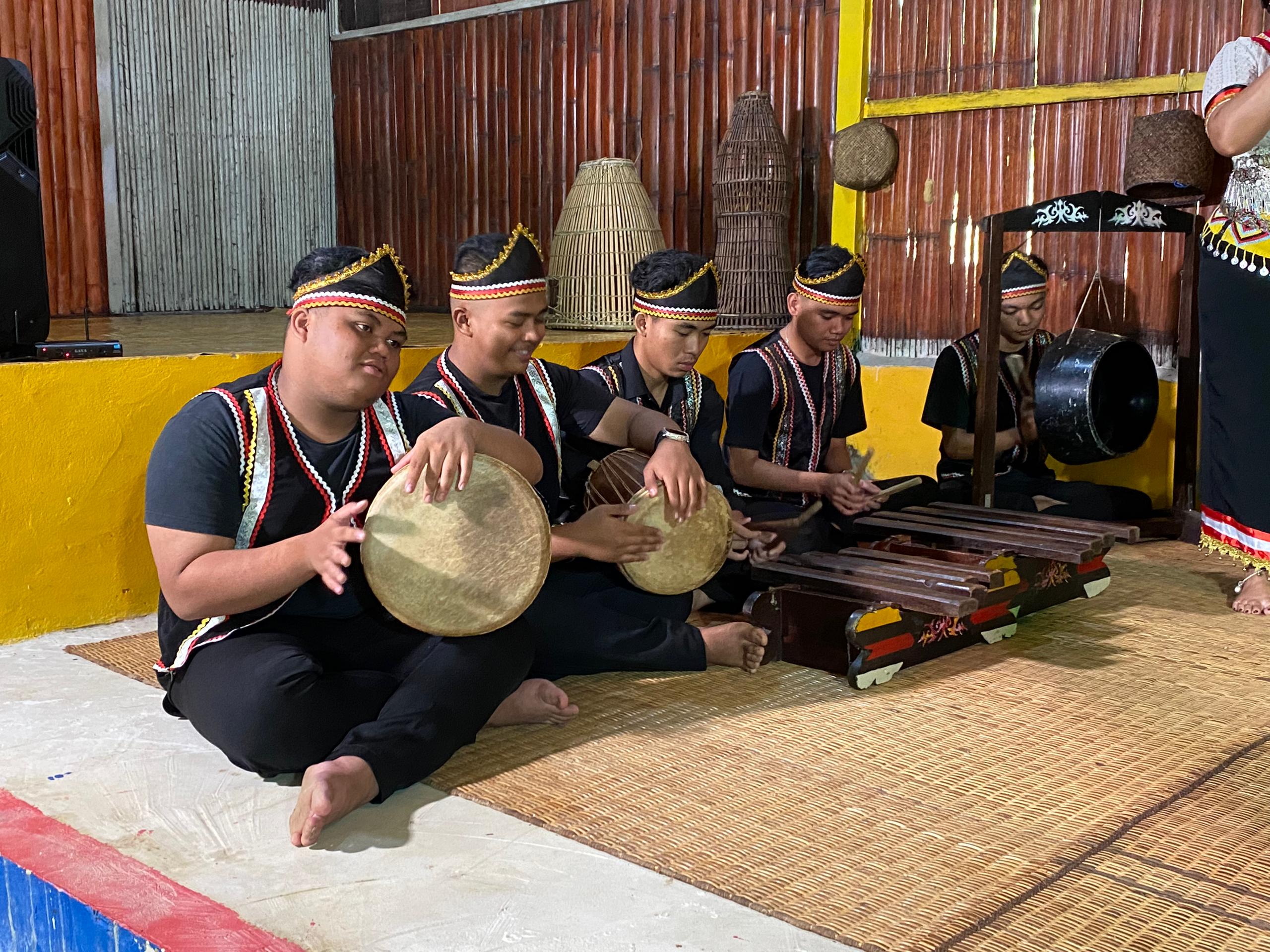ARTS AND CULTURE INFORMATION GATEWAY
Immerse yourself in the colorful world of art and culture! From traditional heritage to contemporary works, discover uniqueness that reflects the nation's identity and identity
TARIAN WEK JONGAN
Picture
16
Video
Available
Today's Visitor
4
Number of Visitors
939
Introduction and history
The wek jonggan song and dance originated from the life story of a Salako ethnic family who once lived in the interior region. The family consisted of three members: the father named Ambujakng, the mother named wek jonggan, and their child named Si Aching. They were farmers who worked on cultivating paddy fields.
The story begins with a tragedy when the father passed away, followed shortly after by the death of the mother. Si Aching was left alone as an orphan. In his sorrow and grief, Si Aching frequently visited his parents’ graves. At the gravesite, he would express his feelings of sadness and loneliness while continuing his work as a paddy farmer. His struggles, hardships, and emotions were poured out in heartfelt words at his parents' graves.
The emotional words and the steps of Si Aching as he circled his parents' graves were later transformed into the lyrics of the wek jonggan song, while the dance movements performed by Si Aching’s friends were intended to comfort him in facing his sorrow and grief. Over time, in keeping with the changing era, the wek jonggan song and dance were adapted into a cultural performance of the Salako ethnic group, primarily for entertainment during rice-related festivities or for welcoming guests at special ceremonies as a symbol of joy. To this day, the Salako people continue to preserve the wek jonggan dance, incorporating movements that reflect the rice planting process as a representation of their ancestral culture and traditions.
The wek jonggan dance plays a significant role as a medium of storytelling that reflects the life of the Salako ethnic community, who are highly dependent on agricultural activities, particularly rice cultivation. Through its dance movements and accompanying song lyrics, the performance symbolically portrays the key stages in rice farming, starting from land preparation, seed planting, crop maintenance, and finally harvesting. Embedded within each movement and lyric are hopes and prayers for abundant harvests, fruitful yields, and protection from natural disasters that may threaten their livelihood.
In addition to depicting daily life, the wek jonggan dance also holds a strong spiritual dimension. It serves as a form of reverence and invocation to Jubata, the ancestral spirits or mystical entities believed to provide protection, guidance, and sustenance to the Salako community. Through this performance, the Salako people maintain a connection with their ancestral heritage as an expression of gratitude and a plea for continued blessings.
Moreover, the dance stands as a powerful symbol of the cultural heritage of the Salako people, passed down through generations. It is not only performed as part of ritual practices but also presented during festive celebrations, communal feasts, and official ceremonies to welcome guests. Through the continued performance of wek jonggan, values such as perseverance, cooperation, respect for nature, and reverence for ancestral beliefs are instilled and preserved among the younger generation
The wek jonggan dance is usually performed by female dancers; however, in some groups or performances, male dancers are also involved to complete the portrayal of roles in the entire rice cultivation process. The costumes and accessories worn by both female and male dancers are as follows:
In the We’ Jonggan dance performance, traditional musical instruments play an
important role in accompanying the dancers' movements and creating a special
atmosphere that reflects the emotions and storyline of the dance. The combination
of these musical sounds enhances the beauty of the performance and brings to life
the cultural traditions of the Salako community. The traditional musical instruments
used in the We’ Jonggan dance are as follows:
1. Agukng (Gong)
The Agukng (Gong) serves as the primary instrument that produces low,
resonant sounds. It provides the basic rhythm for the entire performance.
Typically, two Agukng are used — one large and one smaller in size.
2. Gulintangan or Gulentang (Saron)
Gulintangan or Gulentang is a musical instrument similar to the Saron, but it
15
is made of rectangular wooden bars. Each bar varies in length and pitch,
producing different tones. Usually, two players are required to perform on
this instrument.
3. Gadobong (Drum)
Gadobong or drum is a percussion instrument that produces rhythm
through striking. It is made from wood such as jackfruit wood, with a
hollowed-out center. The size of the Gadobong used in the We’ Jonggan
dance is generally smaller than ordinary drums to better suit the dance's
rhythm.
4. Suling (Flute)
The Suling or flute is made from bamboo and has several air holes along its
body. It produces a soft and melodious sound, often played to add
emotional depth to the performance. The flute’s gentle sound complements
the slow tempo of the dance.
5. Violin
The violin is one of the complementary instruments used in the We’
Jonggan performance, adding melodic beauty to the overall musical
arrangement. Although the violin is not originally a traditional instrument of
the Salako ethnic group, its inclusion in the We’ Jonggan performance
reflects a modern adaptation that blends with tradition, further enriching the
variety of sounds in the performance.
The wek jonggan performance is a combination of dance movements, singing, and traditional musical accompaniment. This dance is usually performed by both male and female dancers, consisting of 3 to 6 pairs depending on the size of the stage and the needs of the performance. Each dancer plays an important role in portraying the journey and life of the Salako community in the activities of planting and harvesting rice.
The performance begins with the soft and serene sounds of the violin and flute, creating a calm atmosphere as the opening of the performance. Gradually, the ensemble of other traditional instruments joins in to enrich the layers of sound. The combination of these instruments forms the main rhythm that serves as the foundation for the dance movements.
Lyrics of the wek jonggan Song
Jarakng jarakng wek jonggan batanam padi,
wek jonggan batanam padi.
Daapm sakilatn la wek jonggan ka dua jari,
Ka dua jari,
wek jonggan ka dua jari.
Jarakng jarakng wek jonggan diri’ batamu,
wek jonggan diri’ batamu.
Daapm sabuatn la wek jonggan ka dua kaie,
Ka dua kaie,
wek jonggan ka dua kaie.
Anak keto wek jonggan anak buriak,
wek jonggan anak buriak.
la nanamlah padi ka tangah paya’,
Ka tangah paya’,
wek jonggan ka tangah paya’.
Paling repo wek jonggan diri’ kaniak,
wek jonggan diri’ kaniak.
Dunia maju la wek jonggan diri’ dah kayak,
Diri’ dah kayak,
wek jonggan diri’ dah kayak.
Uwa’ uwa’ wek jonggan nga'ik antamu,
wek jonggan nga'ik antamu.
Tangket mati la wek jonggan sintak bajaatn,
Sintak bajaatn,
wek jonggan sintak bajaatn.
Baruk eak wek jonggan diri’ batamu,
wek jonggan diri’ batamu.
Bajo'ok topokng la wek jonggan siragey nyampak,
Siragey nyampak,
wek jonggan siragey nyampak.
***1 verse music only
Rabah jantok wek jonggan diri’ ka taiedi,
wek jonggan diri’ ka taiedi.
Satangkakng wek jonggan tama’ ka bubu,
Tama’ ka bubu,
wek jonggan tama’ ka bubu.
Tingkakok wek jonggan nimanglah padi,
wek jonggan nimanglah padi.
Padi atakng la wek jonggan lalu baribu,
Lalu baribu,
wek jonggan lalu baribu.
Udah samputn wek jonggan diri’ ka sumaya,
wek jonggan diri’ ka sumaya.
Mantokng tarap wek jonggan diri’ ka subangi,
Diri’ ka subangi,
wek jonggan diri’ ka subangi.
Babatukng wek jonggan diri’ ka sumaya,
wek jonggan diri’ ka sumaya.
Ganap ihan wek jonggan diri’ taiedi,
Diri’ ka taiedi,
wek jonggan diri’ ka taiedi.
After that, the singer begins to perform the wek jonggan song, which is sung at a slow and gentle tempo, reflecting the story contained within its lyrics. The song narrates the life journey of Si Aching and the challenging process of rice cultivation.
As the singing begins, the female dancers enter the stage in a straight line according to the predetermined formation and choreography. The dance movements largely feature hand gestures that symbolize agricultural activities. Among them are hand movements that mimic the act of placing rice seeds into a small hand basket (antoro) and the back basket, symbolizing the process of planting and collecting the harvest.
The dancers' foot movements are lifted alternately, following the rhythm and tempo of the drum accompaniment, in sync with the beats of the gadobong. The entire performance showcases a harmonious blend of singing, music, and gentle, repetitive dance movements, reflecting the calm, gratitude, and perseverance present in the rice cultivation activities of the Salako community. The performance concludes with closing movements as a sign of gratitude for the successful harvest.
Informant 1:
20
a) Name: Mr. London Anak Tasin
b) Address: No.13A Kampung Pasir Hulu, 94100 Lundu, Sarawak
c) Phone: 013-8184268
d) Email: salakolara@gmail.com
e) Name of Organization/Association: Kelab Jejak Warisan dan Khazanak
Salako Rara
Informant 2:
a) Nama Informan: Puan Alice Anak Kutong
b) Address: No.13A Kampung Pasir Hulu, 94100 Lundu, Sarawak
c) Phone: 019-4386146
d) Email: salakolara@gmail.com
e) Name of Organization/Association : Kelab Jejak Warisan dan Khazanak
Salako Rara
Reference Source
Location
State JKKN Contact Information
Encik Boniface Anak Babai
Cultural Officer
Jabatan Kebudayaan dan Kesenian Negara, Sarawak
Tingkat 5 Bangunan Sultan Iskandar,
Jalan Simpang Tiga,
93000, Kuching,
SARAWAK
019-2399682/082-422006
Use the form below to contact the Informant/Figure/Editor/Researcher directly. We will respond to your inquiry as soon as possible!


